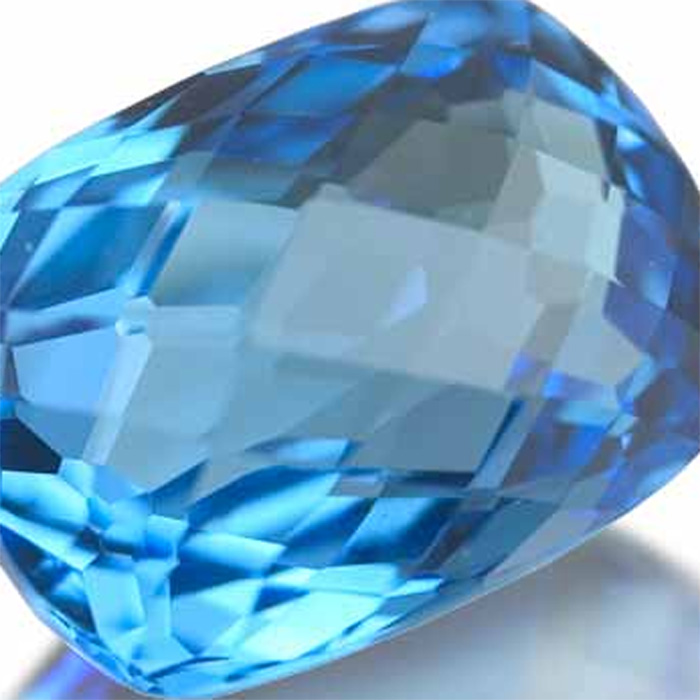Scientific Name: Aluminum silicate fluoride hydroxide.
Group: Silicates – nesosilicates
Chemical composition: Al2SiO4(F,OH)2
Colors: Colorless, blue, yellow, pink, brown, green.
Hardness: 8
Formation: Orthorhombic crystal; Prismatic form
Principal Sources: Russia, Brazil, Nigeria, Utah
Special Notes: Pure topaz is colorless and transparent but is usually tinted by impurities. Typical topaz is wine, yellow, pale gray, reddish-orange, or blue brown. It can also be made white, pale green, blue, gold, pink (rare), reddish-yellow or opaque to transparent/translucent. Orange topaz, also known as precious topaz, is the traditional November birthstone, the symbol of friendship, and the state gemstone for the US state of Utah. Imperial topaz is yellow, pink (rare, if natural) or pink-orange. Brazilian Imperial Topaz can often have a bright yellow to deep golden brown hue, sometimes even violet. Many brown or pale topazes are treated to make them bright yellow, gold, pink or violet colored. Some imperial topaz stones can fade on exposure to sunlight for an extended period of time. Blue topaz is the US state Texas’ gemstone. Naturally occurring blue topaz is quite rare. Typically, colorless, gray or pale yellow and blue material is heat treated and irradiated to produce a more desired darker blue. Topaz was used as a gemstone in ancient Egypt, Greece and Rome.

